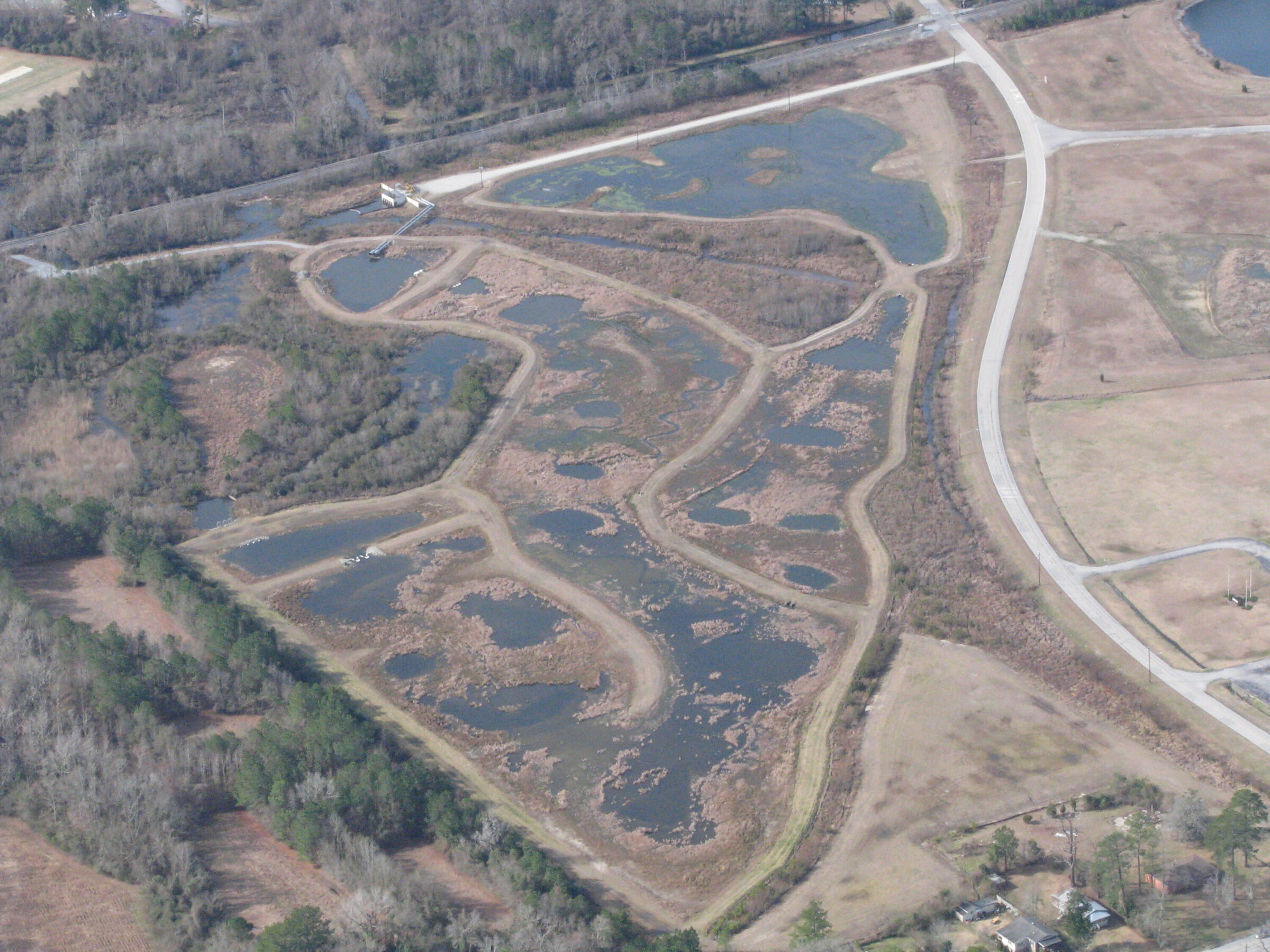Jack Smith Creek Stormwater Wetlands
CONTACT


Stormwater Wetlands
PROJECT SNAPSHOT
Project Type
Non-Bank ProjectLocation
North Carolina | Craven CountyProject Size
- Wetland: 51 AC
Solution
Water QualityEcological Setting
- Green Infrastructure & Urban BMPs
- Wetlands
Storm Water Solution Magazine “Top-Ten Stormwater & Erosion Control Projects for 2013″
The Jack Smith Creek Stormwater Wetlands (JSCSW) project was a partnership between the City of New Bern, North Carolina State University (NCSU), North Carolina Ecosystem Enhancement Program (NCEEP), and the North Carolina Clean Water Management Trust Fund. RES (formerly Carolina Environmental Contracting prior to 2020 acquisition by RES) was selected to construct a stormwater wetland that currently captures and treats runoff from more than 1,000 acres of both residential and commercial properties in New Bern. This project was significant due to not only the volume of stormwater that it can now accommodate but because it is the largest manmade wetland constructed in the state of North Carolina.
The design of the JSCSW incorporated a multi-cell treatment approach that moves the water through various cells, adjustable weirs and culverts to maximize water quality improvements as these best management practices (BMPs) remove contaminants while the stormwater travels through the various systems. Each cell was constructed differently to maintain various depths and velocities. These differences among the cells will maximize the diversity in the wetland community to encourage a varied habitat for the better long-term viability of both flora and fauna.
The project consisted of 25 acres of constructed wetlands, more than 10 acres of preserved wetlands, and 2.3 acres of enhanced wetlands. Over 7,000 of the stream was incorporated into the wetland cells. Work included clearing, grubbing, and grading the wetlands. Nine culverts were installed, three with flap gates. Two concrete water control systems, one vinyl sheet pile weir, rock spreaders, and inlet and outlet pools were included in the design to maintain grade control. A permanent maintenance road was constructed and a pump berm was incorporated in the design to assist with the magnitude of high stormwater flow.
Over 150,000 native wetland plants, trees and shrubs were planted upon completion of construction that will act as filtering components and also will provide extensive habitat for fish and wildlife.
This large-scale project was the first of its kind in the state due to the unique nature of the project, the partnership with NCSU and NCEEP, the management of the project, the high visibility of the project due to its innovation, and the large quantity of clearing and grading.
